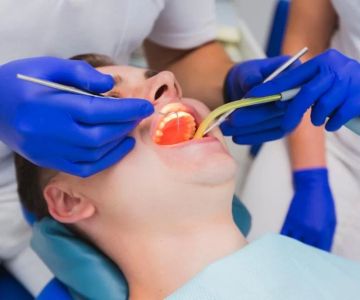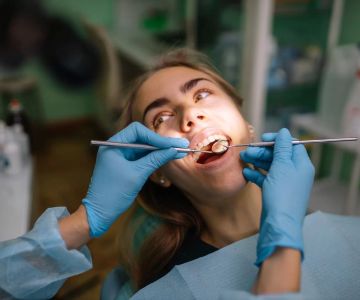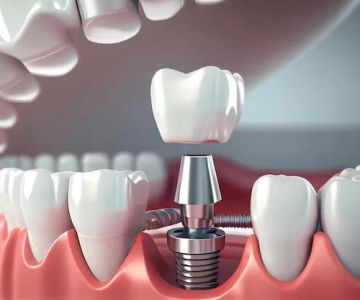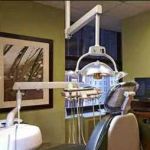Non-Surgical Periodontal Procedures: Effective Treatment for Gum Disease and Better Oral Health
- Understanding Periodontal Disease
- The Importance of Non-Surgical Periodontal Procedures
- Common Non-Surgical Treatments for Gum Disease
- Benefits of Non-Surgical Gum Treatment
- How to Prevent Complications and Maintain Healthy Gums
Understanding Periodontal Disease
Periodontal disease, commonly known as gum disease, is an infection of the gums that can lead to serious oral health issues, including tooth loss. It usually starts with inflammation and infection of the gums, known as gingivitis, and if left untreated, can progress to periodontitis, where the infection spreads to the bones supporting the teeth.
Causes of Periodontal Disease
The primary cause of gum disease is poor oral hygiene, which leads to plaque buildup on teeth. This plaque harbors bacteria that can irritate the gums, causing them to become inflamed and infected. Other factors such as smoking, genetics, hormonal changes, and certain medical conditions can also increase the risk of developing gum disease.
Symptoms of Gum Disease
Common symptoms of periodontal disease include red, swollen gums, bleeding while brushing or flossing, persistent bad breath, and receding gums. If left untreated, gum disease can result in tooth mobility or even tooth loss. Recognizing these symptoms early is key to preventing further complications.
The Importance of Non-Surgical Periodontal Procedures
Non-surgical periodontal procedures are often the first line of treatment for gum disease. These procedures aim to remove plaque and tartar, reduce infection, and promote healing of the gums without the need for invasive surgery. Early intervention through non-surgical methods can prevent the need for more aggressive treatments, saving both time and money, while also preserving your natural teeth.
Why Choose Non-Surgical Treatments?
Non-surgical treatments are highly effective in managing the early stages of periodontal disease and can be performed with minimal discomfort. They are less expensive and involve less recovery time compared to surgical treatments. Additionally, non-invasive procedures can significantly improve gum health and prevent further damage, avoiding the need for tooth extractions or other extensive dental procedures.
Common Non-Surgical Treatments for Gum Disease
There are several non-surgical periodontal procedures that can help treat gum disease effectively. These treatments focus on cleaning the teeth and gums, removing harmful bacteria, and promoting gum healing.
1. Scaling and Root Planing
Scaling and root planing is one of the most common non-surgical treatments for periodontal disease. This deep cleaning procedure involves scraping away plaque and tartar from both the surface of the teeth and beneath the gum line. The root planing portion involves smoothing out rough spots on the tooth roots, which helps remove bacteria and encourages the gums to reattach to the teeth.
2. Antimicrobial Therapy
In addition to scaling and root planing, antimicrobial therapy may be used to reduce bacteria in the gums and mouth. Dentists may apply antimicrobial gels, mouthwashes, or prescribe oral antibiotics to help control infection and promote gum health.
3. Laser Therapy
Laser therapy is a non-invasive treatment that uses focused light to remove diseased tissue and bacteria from the gums. This treatment helps reduce swelling and discomfort while promoting the regeneration of healthy tissue. Laser therapy is often used in conjunction with scaling and root planing to enhance healing and improve long-term results.
4. Maintenance and Follow-Up Care
After completing non-surgical treatments, patients may need to undergo regular follow-up appointments to monitor their gum health. These visits typically involve gentle cleaning and re-evaluating the progress of healing. Regular maintenance helps prevent recurrence of periodontal disease and ensures the gums remain healthy.
Benefits of Non-Surgical Gum Treatment
Non-surgical periodontal procedures offer a wide range of benefits for patients dealing with gum disease. Some of the key advantages include:
1. Minimally Invasive
Non-surgical treatments are less invasive than traditional surgery, which means less discomfort, quicker recovery, and fewer risks. Most patients can resume their daily activities shortly after the procedure.
2. Effective for Early Stages
For those with early-stage gum disease, non-surgical procedures can be highly effective in reversing damage and preventing the need for surgical intervention. Early treatment is essential for maintaining long-term oral health.
3. Cost-Effective
Non-surgical procedures are often more affordable than surgical options, making them a viable choice for many patients seeking to manage their gum health without breaking the bank. These treatments are typically covered by dental insurance, depending on the policy.
4. Enhanced Oral Health
By targeting the underlying causes of gum disease, non-surgical treatments can help restore the natural balance of your oral environment. Regular care and cleaning reduce the presence of harmful bacteria and improve overall gum and teeth health.
How to Prevent Complications and Maintain Healthy Gums
Preventing gum disease complications involves maintaining good oral hygiene practices and seeking early treatment when issues arise. Here are some key tips for keeping your gums healthy:
1. Brush and Floss Regularly
Brushing your teeth at least twice a day and flossing daily are essential steps in preventing gum disease. Proper brushing techniques help remove plaque and bacteria that can lead to gum inflammation and infection.
2. Regular Dental Check-ups
Visiting your dentist regularly for cleanings and check-ups is crucial for maintaining gum health. Professional cleanings remove plaque and tartar that can’t be reached with regular brushing, ensuring your gums stay free from harmful bacteria.
3. Avoid Smoking and Excessive Alcohol
Both smoking and excessive alcohol consumption can increase the risk of developing gum disease and complicate treatment. If possible, quit smoking and limit alcohol intake to protect your gum health.
4. Eat a Balanced Diet
Eating a balanced diet rich in vitamins and minerals helps support the immune system and promotes healthy gums. Foods high in vitamin C, like citrus fruits, can be especially beneficial for preventing gum disease.
If you're dealing with gum disease and would like to explore non-surgical periodontal procedures, visit Dentistry Toothtruth for more information on treatments and products that can improve your oral health.







 Infuse Dental4.0 (292 review)
Infuse Dental4.0 (292 review) Doctor Lenz DDS Gentle Family Restorative Dentistry5.0 (4 review)
Doctor Lenz DDS Gentle Family Restorative Dentistry5.0 (4 review) Corsi Dental Associates4.0 (789 review)
Corsi Dental Associates4.0 (789 review) Excel Dental, Orthodontics & Implant Center4.0 (34 review)
Excel Dental, Orthodontics & Implant Center4.0 (34 review) Dental Smiles of West Chicago4.0 (124 review)
Dental Smiles of West Chicago4.0 (124 review) Coast Dental4.0 (545 review)
Coast Dental4.0 (545 review) The Importance of Oral Health Education During Pregnancy for a Healthy Pregnancy
The Importance of Oral Health Education During Pregnancy for a Healthy Pregnancy Best Tips for Brushing Your Teeth Properly for Healthy Gums: Essential Techniques for Oral Health
Best Tips for Brushing Your Teeth Properly for Healthy Gums: Essential Techniques for Oral Health Why Skipping Dental Checkups Can Lead to Bigger Oral Health Problems
Why Skipping Dental Checkups Can Lead to Bigger Oral Health Problems Advantages of Porcelain Dental Restorations
Advantages of Porcelain Dental Restorations How Can Diabetes Cause Tooth and Gum Problems? Preventing and Managing Oral Health Issues
How Can Diabetes Cause Tooth and Gum Problems? Preventing and Managing Oral Health Issues Healthy Habits for Promoting Good Oral Health and Hygiene: Tips for a Healthy Smile
Healthy Habits for Promoting Good Oral Health and Hygiene: Tips for a Healthy Smile